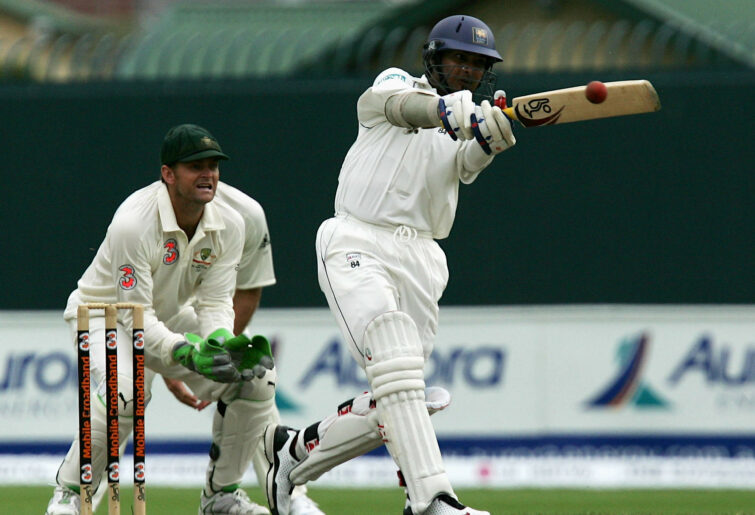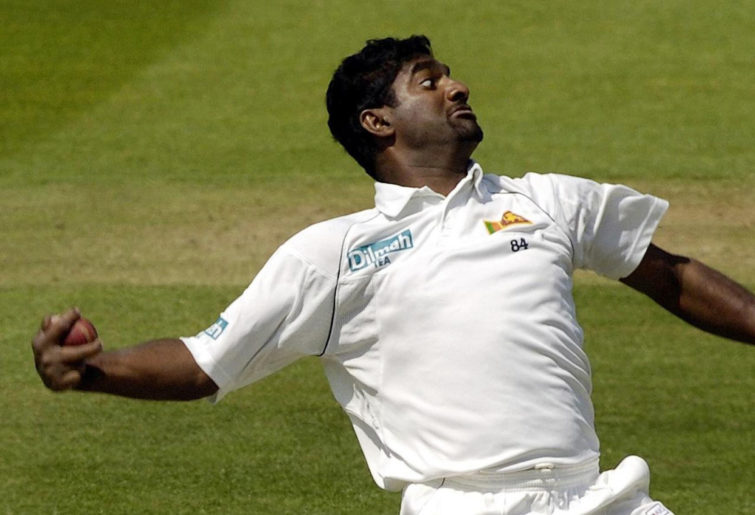In the limited overs formats they have had several trips to the top of the mountain. Revolutionising the ODI format with the blistering starts provided by Sanath Jayasuriya and Romesh Kaluwitharana and key performances from stars like Aravinda De Silva and Arjuna Ranatunga led them to World Cup success in 1996.
Their success helped forge the next generation of Sri Lankan heroes and they returned to the World Cup final in 2007 and 2011.
With the invention of the T20 format Sri Lanka also excelled, reaching the finals three times – in 2009, 2012 and 2014 – and winning the 2014 T20 World Cup.
It is not just in the white-ball game that Sri Lanka has punched above their weight. From their first Test match in 1982 in Colombo against England they have come a long way, climbing as high as the second-ranked team in the world in 2002.
Overall, they have taken part in 307 Test matches and won 98 of them, with 92 draws.
Most impressively for a young cricketing nation is that they have already provided some of the very best players to play the game.
They boast the all-time leading wicket-taker in Test cricket with Muttiah Muralitharan and two players who’ve broken the coveted 10,000 Test match run barrier with Kumar Sangakkara and Mahela Jayawardene and hold the record for the highest Test match score with 952/6 against India in 1997.
In their short tenure there have already been multiple generations of star players representing them indicating that they have an impressive domestic system that is capable of moulding young talent into polished professionals.
While the team currently sits seventh overall in the ICC rankings, with some of the talented young players currently in the Sri Lankan system it is not hard to imagine the nation to come climbing up the rankings not too far in the future.
All that being said despite their short history there are plenty of incredible players and sorting them into a best XI was no easy task. Here is our attempt to best the best from Sri Lanka.
Sanath Jayasuriya (Tests: 110, average: 40.07, HS: 340)
One of the great attacking batsman of all time, the third player to be dubbed with the moniker ‘Master Blaster’ after Viv Richards and Sachin Tendulkar. He helped revolutionise the ODI game but was a brilliant Test player as well.
The first Sri Lankan to reach 100 Tests and held the record score for a Sri Lankan batsman for a time. Absolutely devastating with the cut and pull shots and a more than handy left-arm orthodox spinner with 98 Test wickets at an average of 34.
Marvan Atapattu (Tests: 90, average: 39.02, HS: 249)
After a disastrous start to his Test career, five ducks and a 1 in his first six innings, Atapattu eventually found his feet as a Test opener. He was seen as one of the most technically correct batsman from his era and soon gained an appetite for scoring runs.
He has six double-centuries to his name which is the seventh-highest of all time. Adding strings to his bow he was also an excellent fielder and was adept at effecting run-outs.
Kumar Sangakkara (Tests: 134, average: 57.40, HS: 319)
Not only one of the greatest Sri Lankan batsman but one of the finest who has ever played anywhere in the world. After ditching the gloves midway through his career in 2006 he would go on one of the great runs as a batsman, averaging 65 for the remainder of his storied career on his way to 12,000 Test runs and 38 Test hundreds.

(Photo by Quinn Rooney/Getty Images)
An almost flawless technique and managed to score runs across the globe. In 2021 Sangakkara was inducted into the ICC Cricket Hall of Fame and was only the second Sri Lankan to receive that honour.
Mahela Jayawardene (c) (Tests: 149, average: 49.84, HS: 374)
Shares the honour of the most successful Sri Lankan captain, known for his tactical acumen during his tenure and showed great captaincy instincts. As a batsman Jayawardene holds the record for the highest Test score by a Sri Lankan and one of two who have broken the 10,000-run barrier.
Certainly more comfortable in the subcontinent conditions averaging around 60 however he has still managed to score hundreds everywhere he’s toured save South Africa.
Aravinda de Silva (Tests: 93, average: 42.97, HS: 267)
Sri Lanka’s talismanic batsman in their early days and one of the driving forces changing them from the underdogs to sitting as part of the world’s elite. The first man in Test history to have two unbeaten hundreds in a single Test match and on two occasions he has scored 100s in both innings.
An aggressive batting style that often got him out to rash shots as a younger player, he would convert that start to end up with 20 Test match hundreds.
Angelo Mathews (Tests: 100, average, 45.14, HS: 200 not out)
In the early parts of his career was a handy bowling option to compliment a batsman whose average hovered near 50 for large parts of his career. A stylish somewhat aggressive batsman who has a very handy record in countries like England and New Zealand where his countrymen have often struggled.
His solidarity batting in the middle order helped Sri Lanka’s success in the late 2000s and early 2010s. Was also seen as an athletic fielder rounding out a very solid skillset. His impact on Sri Lankan cricket also saw him become the youngest Test captain at just 25
Dinesh Chandimal (wk) (Tests: 68, average: 42.02, HS: 206 not out)
Made his debut against South Africa in 2011, scoring fifties in each innings and helping Sri Lanka secure its first win in South Africa. His career has had ups and downs but his Test average is very impressive for a keeper-batsman and he has gone on to score 13 Test hundreds and has a knack of scoring runs in clutch situations.
More recently he was instrumental in securing Sri Lanka’s first innings victory over Australia with a sublime 206 not out.
Chaminda Vaas (Tests: 111, wickets: 355, average: 29.58)
One aspect of Test cricket that Sri Lanka has struggled with is consistently developing quick bowlers who can stack up with some nations around the globe with more pace friendly conditions. Vaas certainly bucks that trend; an average sub 30 is considered to be good and when you factor in the volume of matches on Sri Lankan pitches it’s even more impressive.
The left-armer is by far the best new ball bowler Sri Lanka has produced and was adept at both forms of swing bowling and manipulating the seam.
Rumesh Ratnayake (Tests: 23, wickets: 73, average: 35.10)
A career often hamstrung by injuries, Ratnayake spearheaded the Sri Lankan in the early days and helped shoulder a great deal of the load. He could swing the new ball and had an impressive amount of pace and bounce as part of his armoury.
He has some memorable performances in Australia and England, taking five-wicket hauls in Hobart and at Lords.
Rangana Herath (Tests: 93, wickets: 433, average: 28.08)
Put simply the most successful left-arm spinner in Test history. A bowler who showed the mental fortitude to bowl long spells with laser like accuracy and subtle changes of flight and pace.
In his early days he was used as a holding spinner to allow Muralitharan to do the damage at the other end. Since Murali’s retirement Herath really came into his own as the primary option for Sri Lanka.
Muttiah Muralitharan (Tests: 133, wickets: 800, average: 22.72)
The all-time leading wicket-taker in Test cricket history with an incredible average when you compare it to other off-spinners.
Probably the most polarising figure since Douglas Jardine: on one side people that think his ability to extract huge turn on just about any surface and bowl absolute immense spells makes him one of the best to ever do it, and on the other side of the fence he’s a player who had the yard stick moved to allow his dubious action legitimacy.
His trips to Australia and India were outliers – he averaged 27 or less against every other nation and less than 20 in England, Bangladesh, New Zealand and at home. He has over 100 wickets against England, India and South Africa.
Over the course of his nearly 20-year career, he was a proven match winner time and again.

(Photo by Rebecca Naden – PA Images/PA Images via Getty Images)
12th man: Thilan Samaraweera (Tests: 81, average 48.76, HS: 231)
Almost Sri Lanka’s Steve Smith, initially seen as an off-spinner, he was in and out of the ODI side as a bowler stuck behind Muralitharan. After working on his batting he was rewarded with a Test debut and scored three hundreds in his first six Tests.
Samaraweera bridged the gap between middle order players like de Silva and the next generation like Mathews and Sangakkara. His batting style was patient and diligent to offset the flamboyant stroke-makers around him.
His fierce determination and mental reserves can be shown by not allowing bullet wounds sustained in the 2009 shooting against Pakistan to stop him returning to international cricket. His bowling was underused at the international level but he does have 357 wickets at 23.43 to his name.
Honourable mentions: Arjuna Ranatunga, Dimuth Karunaratne, Suranga Lakmal, Lasith Malinga
As highlighted earlier Sri Lankan cricket has already separated into distinct generations of players and those generations have each had significant success on the world stage. There can be no doubt this tiny nation has plenty of passion for cricket and good systems in place to continue to develop players ready made for international cricket.
With young cricketers like Pathum Nissanka and Wanindu Hasaranga making names for themselves on the world stage it’s hard to imagine that Sri Lanka won’t be having a turn of fortune soon and be adding some more names to the pantheon of greats they already have.
There can be no doubt that this young nation has already added a great deal to the tapestry of international cricket.

